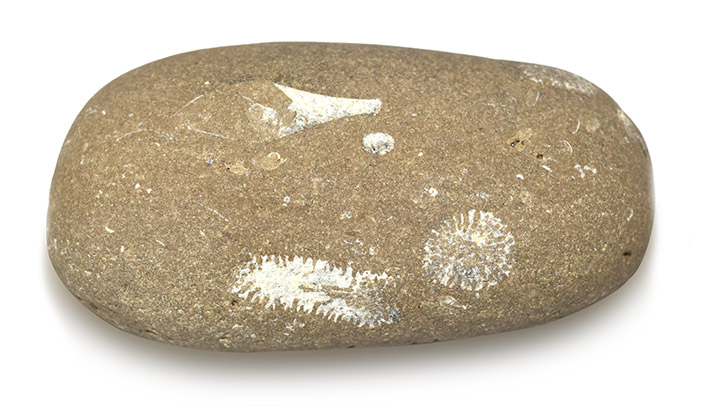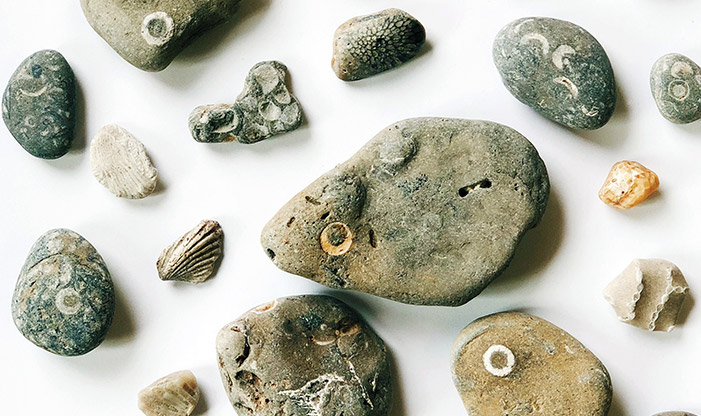When you hike down the bluff to Lake Michigan, you are taking a trip back in time to the Silurian Period, which took place more than 400 million years ago. This was long before the Lake Michigan we know existed. This entire area was covered by a shallow saltwater sea, known as the Silurian Sea. Animals of this time period are the Lake Michigan fossils we find today.
The Silurian Sea was teeming with swimming and flowing life such as crinoids, cephalopods, brachiopods, and various corals. The creatures and corals of the Silurian Sea were preserved because they became fossilized, and today we can find the fossilized remains of these creatures washing up on the Lake Michigan shore.
How Lake Michigan Fossils are Created
For fossils to be created, typically the life form becomes buried beneath layers of water and earth. When shielded from oxygen, organic matter resists decomposition. Instead, minerals can seep in and solidify, eventually taking the place of organic tissue. In time, animal structures are completely replaced by minerals, which eventually harden into the fossil we find.

Example of a fossil found on our beach at Schlitz Audubon.
During formation, fossils are surrounded by layers of sediment, which gradually turn into stone. Often times the fossil and the surrounding rock layer are made up of different minerals that erode or wear away at different rates. As the rock around the fossil is eroded away, the fossil inside remains intact because it is a harder material. Some fossils we find have been completely eroded out of the rock layer they were once frozen inside of, while others are still fixed inside of rocks.
Glaciers and Lake Michigan Fossils
We have the glaciers to thank for our Lake Michigan fossils. Thousands of years ago, massive glaciers carved so deep they reached into sediment from the Silurian Period. When glaciers melted or receded, they left behind the Great Lakes inside that massive etched basin.
Common finds along our shore include brachiopods, which are bivalve-shelled animals, cephalopods, which are mollusks, and a variety of corals, such as rugose coral, which looks like thimbles. Our most common find is the crinoid, an animal that looks like a plant stem holding a cup of tentacles that would snag food that drifted by. What we find from the crinoid is a fossilized tentacle, often in a circular shape, and so nicknamed the Cheerio fossil.
Take Pictures, Leave Treasures for Everyone to Discover
If you discover Lake Michigan fossils, we ask that you enjoy experiencing and taking photographs of them, but please leave fossils on the beach for everyone to find. We wish for as many people as possible to experience discovering a 400-million-year-old artifact.
With each step toward Lake Michigan, you’re walking closer to the Silurian past of 400 million years ago. Join us in discovering the history that washes ashore.


